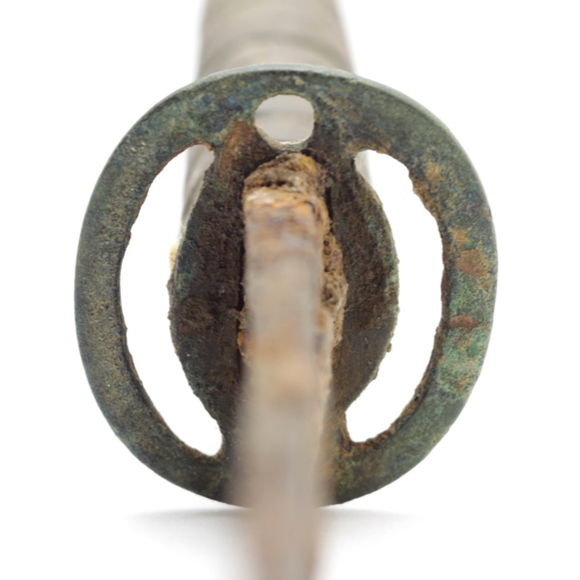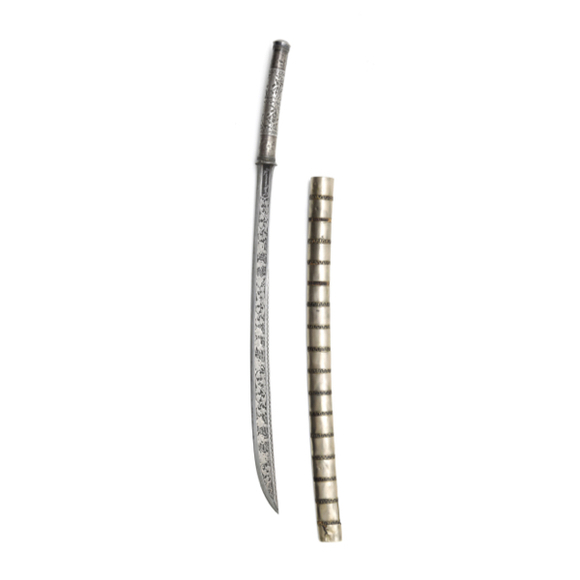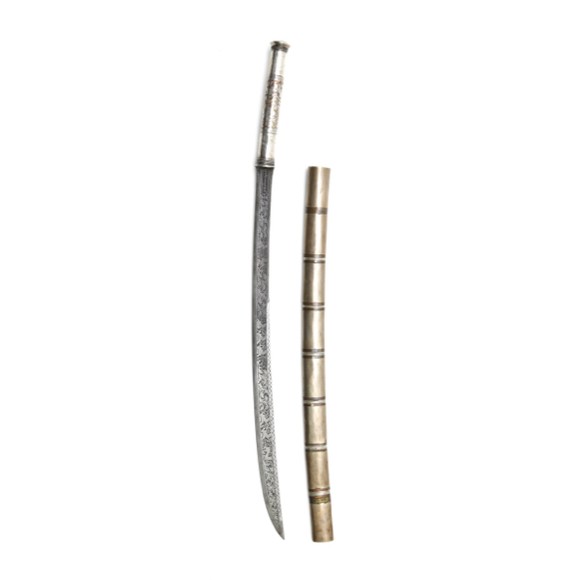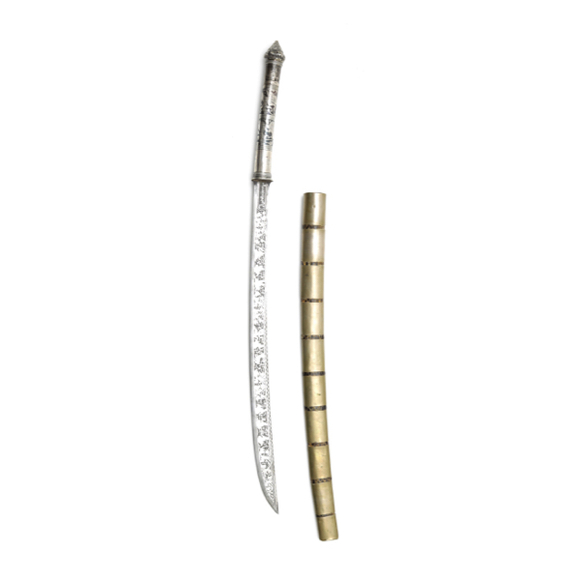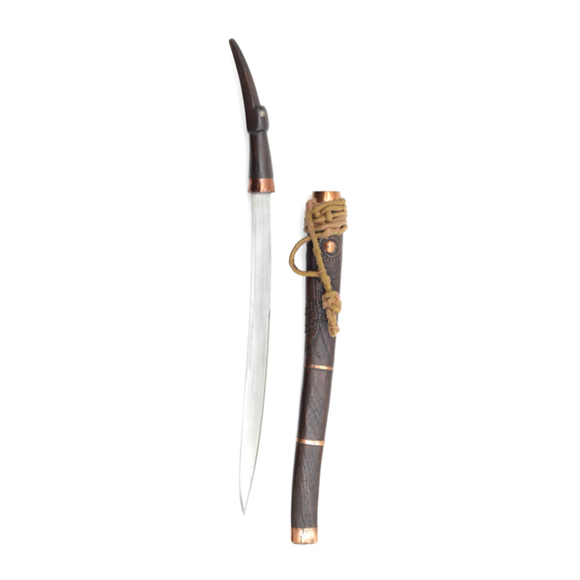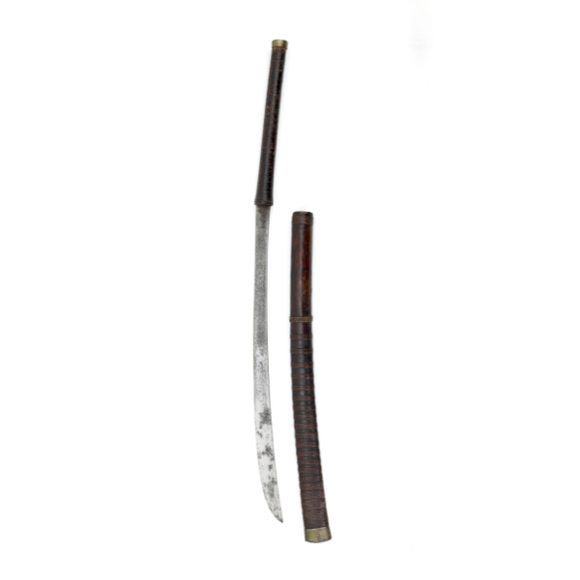In excavated condition, with copper alloy hilt.

81.5 cm
61.2 cm
Base 12 mm
Middle 8 mm
5 cm from tip 4.5 mm
Narrowest at base 24 mm
Widest at tip 32.5 mm
846 grams
15.5 cm from hilt
Iron, steel, copper, bronze, brass, wood, resin
The general area of Southern Burma and Northern Thailand borderlands.
Possibly 1923
Description
This sword has a very thick and heavy blade. It is slightly hollow ground on each side, and has a rounded spine. The blade is decorated with engravings and punched marks.
The hilt consists of a slightly bulging wooden grip, with long bronze ferrule and brass pommel piece.
The blade comes with a marking on either side:

This side may be the Burmese number 1283 (၁၂၈၃) which corresponds to 1923 A.D.

This side remains unclear. Native Thai and Burmese readers could not recognize the script and suggested it was perhaps Dehong Dai script, used to write the Tai Nuea language.
Attribution
The blade geometry tends more towards southern Burmese work, of the Bamar majority ethnic group of that area. The blade decor is somewhat reminiscent of Thai and Laos work. Similar swords, without the blade decor, were worn by Burmese policemen during the British Raj period, and some have turned up with British military broad arrow marks.














Fine silver overlaid dha made in Mindan village, south of Mandalay, gained fame in the 19th…

